Post WWI US Army M1926 Spec 8-31A Service Uniform. MG Troop 1st Cavalry Brigade
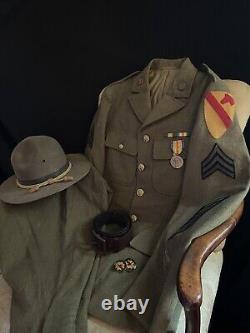
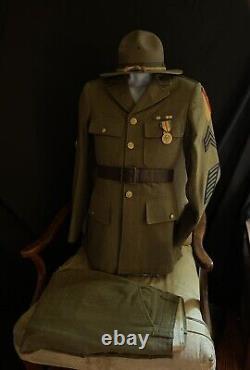
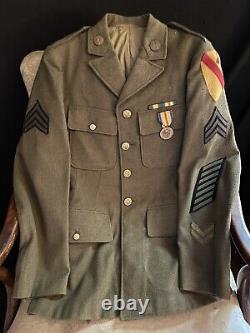
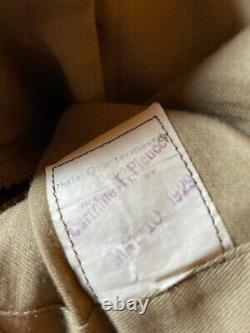
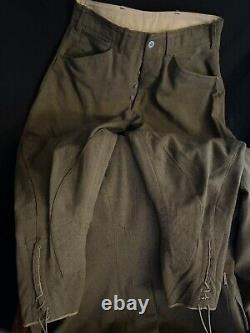
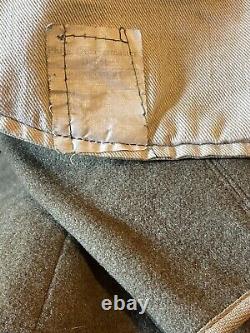
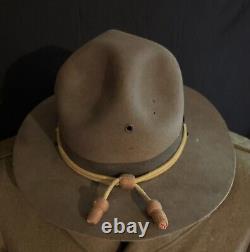
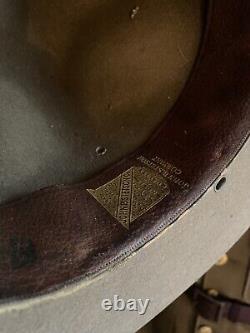
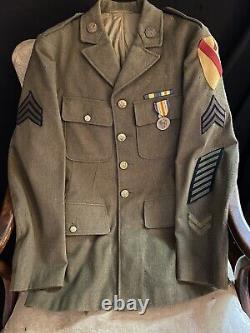
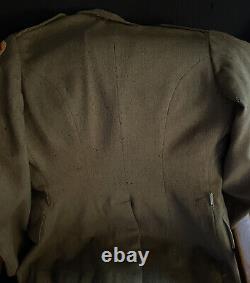
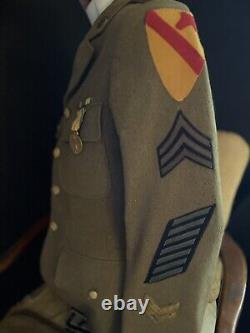
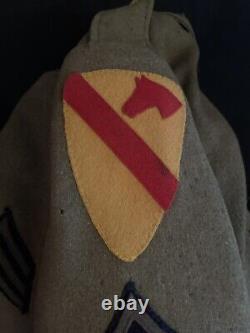
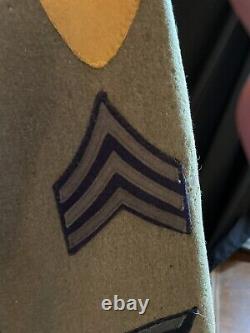
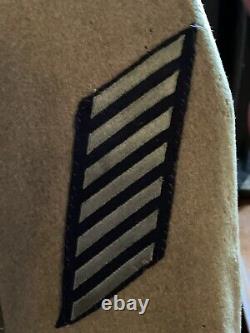
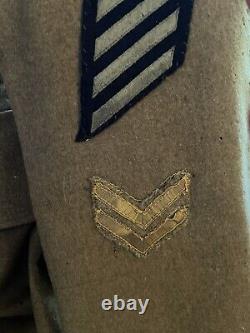
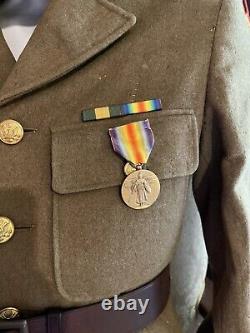
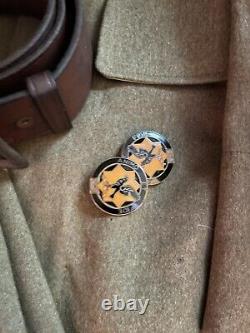
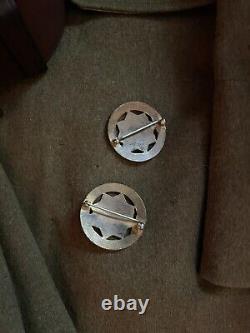
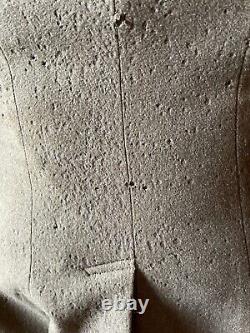
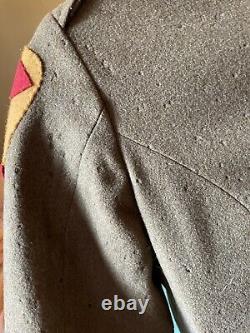
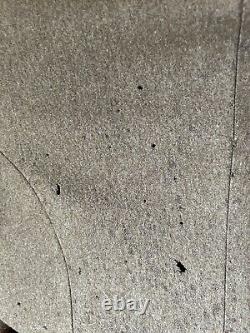
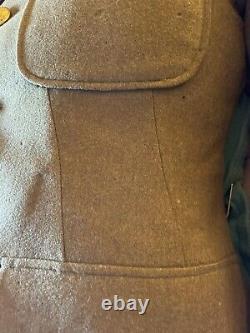
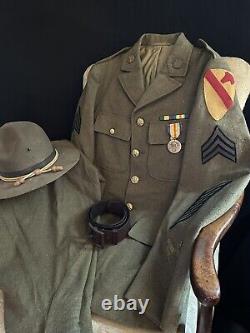
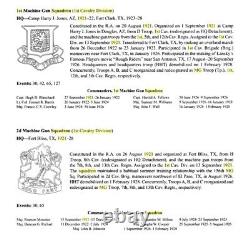

For your consideration is this exceedingly illusive U. Army M1926 EM Winter Service Uniform dated 10 March 1929. This uniform was used by Troop A "Machine Gun Troop", 1st Cavalry Regiment, 1st Brigade, 1st Cavalry Division from 1928 to 1933. I have found 2 distinctive unit identifications or DI for the 1st Cavalry Regiment inside the pocket along with a smashed rifle expert badge.
The badge looked like it was run over by a train. The collar disks are "US 1" & "MG Cavalry".
Putting all the information together, along with primary resources, this was an A Troop, 1st Cavalry Regiment, 1st Brigade, 1st Cavalry Division. The very tip of the arrow. It seems that the Army Specification was post dated to this uniform by 11 months. This is quite literally the earliest Interwar Period uniform that I have ever seen.
Heck, this uniform pre dates "Great Depression" by 6 months. Army Uniforms 1926 through 1943. The standing collar of the uniform coat, standard since 1911 for the Service Uniform and since long before that many of the uniform coat's prescribed for officers, have always been uncomfortable. The uniform regulation & specification published December 31, 1926, announced the official change to a new peak lapel collar service coat for officers and enlisted men.
The new coat for the enlisted men is similar to the officer's pattern, has notched lapels, slightly different than those called peak lapels, & the upper pockets are without pleats & have differently shaped pocket flaps. In general - To be single-breasted, notched lapel collar, sack coat of olive drab woolen or cotton material of adopted standard. The coat will be lined or not, as required; lining to be of same color as coat. The coat is made of melton wool like that of the M1917 EM Service Coat used during WWI. Overall, the tunic is a B. There are no large holes in the tunic, but there are many slight pin holes in the tunic mostly on the back of the coat. Very few are all the way through.This being said, the coat is complete, and still very attractive. Note: The difference between this uniform and the uniform type of the Spec 8-31B is that this uniform is made of melton wool and not made whipcord wool. This uniform has an olive drab color and not the mustard colored 8-31B. There is only one notable differences and there are 2 seems between the breast pocket and waist pockets that are not on the 8-31B, 8-31C, or 8-31D. M1926 Spec 8-31A Service Coat (Melton Wool).
M1926 Enlisted Breeches (Melton Wool). Cavalry Machine Gun Troop hat chord.The history of the 1st Cavalry Division began in 1921 after the army established a permanent cavalry division table of organization and equipment on 4 April 1921. It authorized a square division organization of 7,463 officers and men, organized as follows. On 20 August 1921, the War Department Adjutant General constituted the 1st and 2nd Cavalry Divisions to meet partial mobilization requirements, and authorized the establishment of the 1st Cavalry Division under the new TO&E on 31 August 1921. Since 1st Cavalry Division was to assemble from existing units, it was able to go active in September 1921, even though the subordinate units did not arrive completely until as late as 1922.
1st Cavalry Division was assigned to the VIII Corps Area, with its division headquarters and 2nd Brigade located at Fort Bliss, Texas, and the 1st Brigade at Camp Harry J. Adquarters facilities used by 1st Cavalry Division were those previously vacated by 8th United States Brigade when it was commanded by MG John J.Pershing in 1916, and the wartime 15th Cavalry Division, which had existed at Fort Bliss between 10 December 1917 and 12 May 1918. The 1st Cavalry Division assembled at Douglas, Arizona. 1st Cavalry Regiment remained assigned until it was transferred to 1st Cavalry Division on 20 August 1921. The 7th, 8th, and 10th Cavalry Regiments were transferred on 13 September 1921, although the assignment of the 10th Cavalry Regiment to the 1st Cavalry Division was controversial because the transfer violated the Jim Crow laws.
This controversy continued until 18 December 1922, when the 5th Cavalry Regiment, then on the VIII Corps Area Troop List, swapped places with the 10th Cavalry Regiment. In 1923 the 1st Cavalry Division held division maneuvers for the first time, intending to hold them annually thereafter. However, financial constraints made that impossible. Only in 1927, through the generosity of a few ranchers who provided free land, was the division able to conduct such exercises again. In 1928 Major General Herbert B.
Crosby, Chief of Cavalry, faced with personnel cuts, reorganized the cavalry regiments, which in turn reduced the size of the 1st Cavalry Division. Crosby's goal was to decrease overhead while maintaining or increasing firepower in the regiment. After the reorganization each cavalry regiment consisted of a headquarters and headquarters troop; a machine gun troop; a medical and chaplain element; and two squadrons, each with a headquarters element; and two line troops. The cavalry brigades' machine gun squadrons were inactivated, while the responsibility for training and employing machine guns fell to the regimental commanders, as in the infantry. About the same time that Crosby cut the cavalry regiment, the army staff, seeking to increase the usefulness of the wartime cavalry division, published new tables of organization for an even larger unit. The new structure increased the size of the signal troop (177), expanded the medical unit to a squadron (233), and endorsing Crosby's movement of the machine gun units from the brigades to the regiments (2X176). A divisional aviation section, an armored car squadron (278), and tank company (155) were added, the field artillery battalion was expanded to a regiment (1,717), and divisional strength rose to 9,595.With the arrival of the 1930s, serious work started on the testing and refining of new equipment and TO&Es for a mechanized and motorized army. To facilitate this, 1st Cavalry Division traded 1st Cavalry Regiment for 12th Cavalry Regiment on 3 January 1933. Taking into account recommendations from the VIII Corps Area, the Army War College, the board developed a new smaller triangular cavalry division, which the 1st Cavalry Division evaluated during maneuvers at Toyahvale, Texas, in 1938. Try division test, the maneuvers concentrated on the divisional cavalry regiments around which all other units were to be organized. Following the test, a board of 1st Cavalry Division officers, headed by Brigadier General Kenyon A.
Joyce, rejected the three-regiment division and recommended retention of the two-brigade (four-regiment) organization. The latter configuration allowed the division to deploy easily in two columns, which was accepted standard cavalry tactics. However, the board advocated reorganizing the cavalry regiment along triangular lines, which would give it a headquarters and headquarters troop, a machine gun squadron with special weapons and machine gun troops, and three rifle squadrons, each with one machine gun and three rifle troops. No significant change was made in the field artillery, but the test showed that the engineer element should remain a squadron to provide the divisional elements greater mobility on the battlefield and that the special troops idea should be extended to include the division headquarters, signal, and ordnance troops; quartermaster, medical, engineer, reconnaissance, and observation squadrons; and a chemical warfare detachment. Arters would assume responsibility for the administration and disciplinary control for these forces. Although the study did not lead to a general reorganization of the cavalry division, the wartime cavalry regiment was restructured, effective 1 December 1938, to consist of a headquarters and headquarters troop, machine gun and special weapons troops, and three squadrons of three rifle troops each. The special troops remained as structured in 1928, and no observation squadron or chemical detachment found a place in the division.With the paper changes in the cavalry divisions and other minor adjustments, the strength of a wartime divisional rose to 10,680. In order to prepare for war service, 1st Cavalry Division participated in the following maneuvers. Toyahvale, TX Maneuvers - 7 October through 30 October 1939. Cravens-Pitkin Louisiana Maneuvers - 13 August through 24 August 1940.
Second 3rd Army Louisiana Maneuvers - 10 August thro. Louisiana Maneuvers near Mansfield, LA - 27 July 1942 - 21 September 1942.

